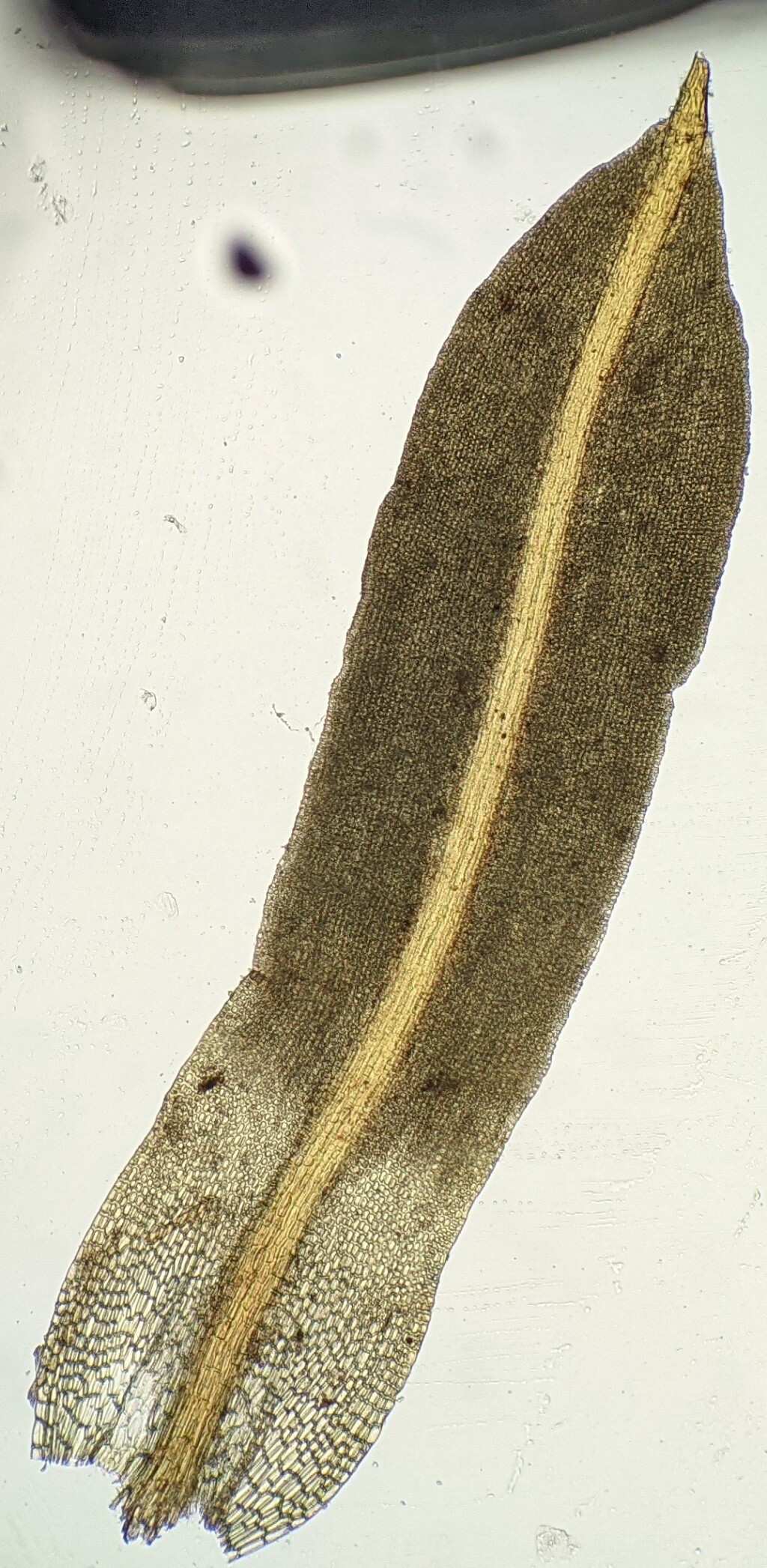Trichostomum
Dioicous. Asexual reproduction rarely by rhizoidal tubers (not in Victoria) or by gemmae on the adaxial costa (not in Victoria). Turves on soil or rock. Stems simple or irregularly branched, with sparse rhizoids or or occasionally tomentose (not in Victoria); central strand present or absent; hyalodermis present or occasionally absent; sclerodermis weak. Leaves oblong, elliptic or lingulate to lanceolate, erect- to wide-spreading when moist, incurved or crisped when dry; apex rounded (not in Victoria), obtuse, acute or acuminate; costa excurrent as a smooth mucro, with quadrate to elongate adaxial superficial cells, with a differentiated adaxial epidermis, with an adaxial stereid band, without a hydroid strand, with an abaxial stereid band, with a weak abaxial stereid band or abaxial stereid band absent, without a differentiated abaxial epidermis, with short-rectangular to elongate abaxial superficial cells; margin entire or occasionally denticulate in apical half, plane or erect, occasionally with a border of less papillose cells (not in Victoria); laminal cells in apical half quadrate or subquadrate, pluripapillose, rarely bistratose (not in Victoria) along margin or in patches, with yellow to orange KOH reaction; basal laminal cells differentiated equidistantly from base from margin to costa or extending further at margin, rectangular, smooth. Acrocarpous. Capsule erect, straight, cylindric, ovoid or elliptic, exserted, operculate, with an annulus. Calyptra cucullate, smooth. Operculum conic to rostrate. Peristome absent, rudimentary or of 16 short, straight, entire or split teeth.
Worldwide, except Antarctica, with around 130 species, but generic limits in need or re-evaluation (see below); two species in Victoria.
Trichostomum is probably best included in Weissia, but is retained here until all combinations of Victorian Trichostomum are made in Weissia. In a nuclear ITS phylogeny, a group comprising mostly Trichostomum species, including the type species, along with one Weissia species, was recovered and this group may have been derived from Weissia ancestry (Werner et al. 2005). This group could be considered representative of a redefined monophyletic Trichostomum, however, it seems scarcely distinguishable from Weissia, as sexual condition seems to be the main feature that mostly differs between the two groups, with Weissia mostly autoicous, but occasionally dioicous, and tne redefined Trichostomum would be exclusively dioicous (Werner et al. 2005).
 Spinning
SpinningWerner, O.; Ros, R.M.; Grundmann, M. (2005). Molecular phylogeny of Trichostomoideae (Pottiaceae, Bryophyta) based on nrITS sequence data. Taxon 54: 361–368.

